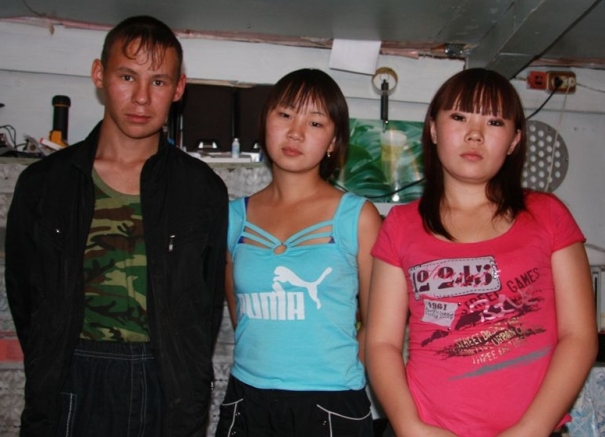Evenks live in the Siberian taiga. That’s the boreal forest. Coniferous? It’s evergreen trees in the mountains in plain English. Evenks live all over Siberia. Haven’t heard of them?

What Do You Know About Evenks?
Some Evenks bred cattle and horses and even did some farming, but we will follow those who went north and became hunters and reared reindeer in the mountain taiga. Don’t make me explain taiga again. One reason they spread all over eastern Siberia is that they traveled light. They had light conical tents, excellent skis, and light clothing. They were very mobile. And reindeer need to move around a lot to find their food.
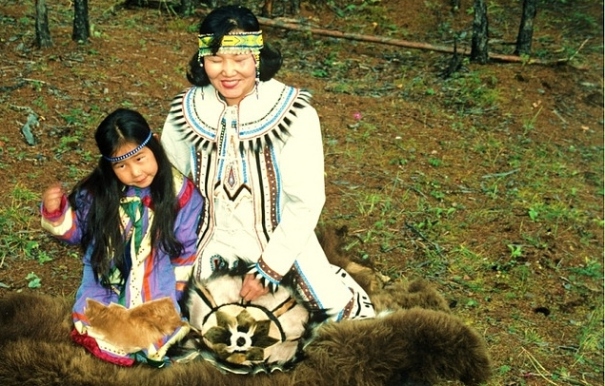
In the 17th century, Russians showed up. Before long, they started taxing the Evenks. They collected the tribute in furs. The Evenks traded with the Russians for stuff they could not make themselves but it was always an uneasy relationship…
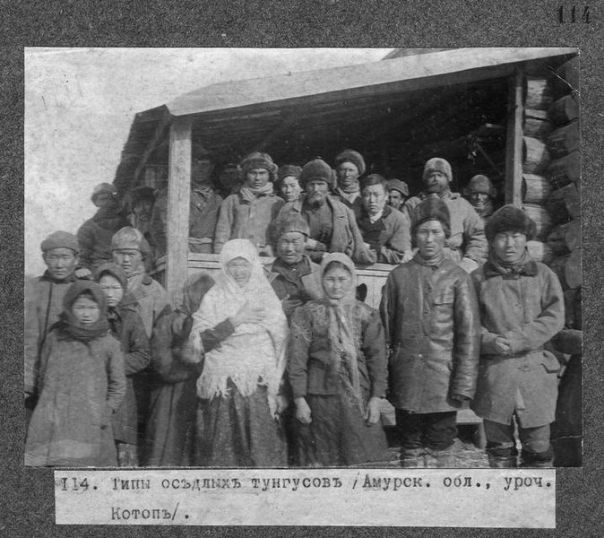
Reindeer
Unlike some other reindeer herders who used reindeer to pull sledges, the Evenks tamed reindeer and rode them using special saddles. Instead of stirrups, they used a stick for balance. They also used their reindeer as pack animals. When they weren’t riding the reindeer, they used skis to keep on the move. The Evenki people did not eat their domesticated reindeer but they did hunt and eat wild reindeer.

Most Evenks kept about 25 reindeer since they used them mostly for transportation purposes. Unlike neighboring tribes, Evenks didn’t use dogs to help them herd the reindeer. In the spring, the winter camps broke up and moved to places suitable for calving. Special fenced off areas guarded the newborn calves against being trampled. Evenki alone have maintained the ancient Tungus culture.
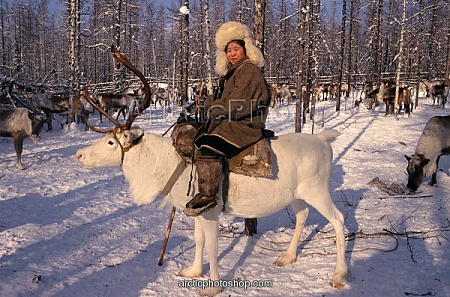
Russian Influence
The Soviets were determined to change the Evenks. Soviet ideology was explained in propaganda centers called “red tents”. In the 30s, the Evenk National Territory was formed in the Krasnoyarsk district. They tried to settle the nomadic Evenks. They built buildings and schools in the new villages. They even tried collectivism on reindeer breeding.

The Evenks didn’t have a written language. The Russians thought they needed one and started teaching the new writing system in the schools in the Evenk National Territory. By 1980, only half of them still used the native language. The other half had adopted Russian, Buryat, or Yakut. Most Evenks are bilingual. In 1980, two thirds of Evenks spoke Russian fluently, and many considered Russian to be their mother tongue.
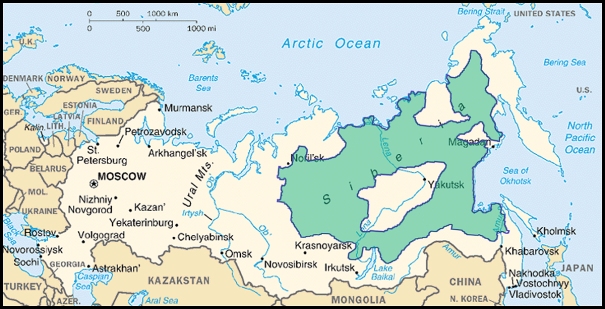
Clothing
The Evenks kept warm with a loincloth of soft reindeer skin around their hips, along with leggings and long supple thigh-high boots. They covered all this with a deerskin coat that didn’t close in front. The gap was covered with an apron-like cloth. Some outfits were well decorated with fringes and embroidery. All this was often set off with some facial tattooing.
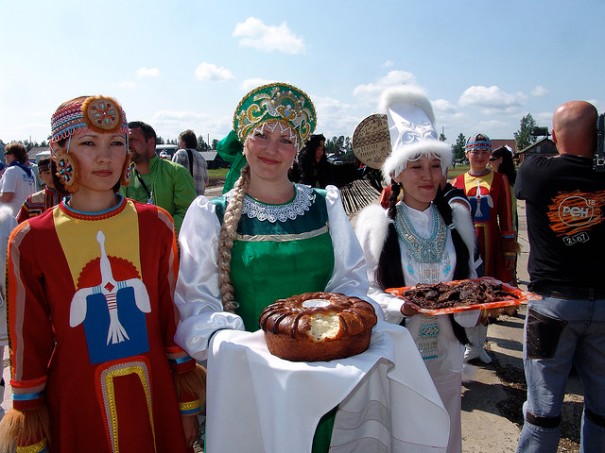
Hunting
Evenki taiga-dwellers hunted elk, wild reindeer, and birds. But they might track down a bear or a wolf on occasion and maybe even a startled Siberian marmot. The tsar demanded larger taxes paid in fur, so the Evenki began using traps. Traditionally, they used bows and arrows for hunting. Also, hunters always carried the useful “pike”. That was a big knife on a long handle that they chopped their way through the thick taiga and also doubled as a spear when hunting bear. When hunting wild deer, they attracted them by making sounds with an instrument, sounding like a deer. The hunter moved easily and quietly with his stuff in a back pack on his wide skis.
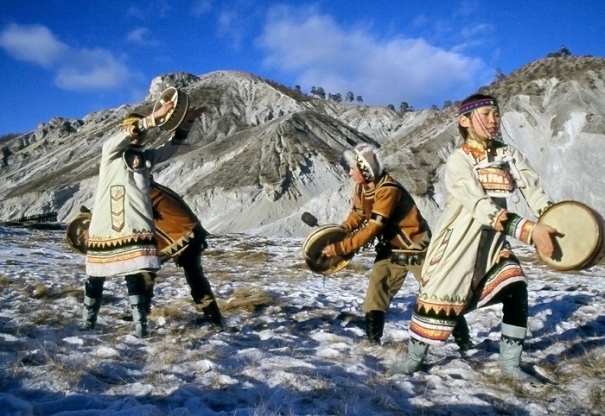
Humane Hunters
The Evenks held a deep respects for animals and all nature. They were humane in their hunting. They would make sure a wounded animal was quickly killed to avoid suffering. They also had a rule about not killing any animals that were saved from pursuit by predators or that helped a person in trouble in any way.
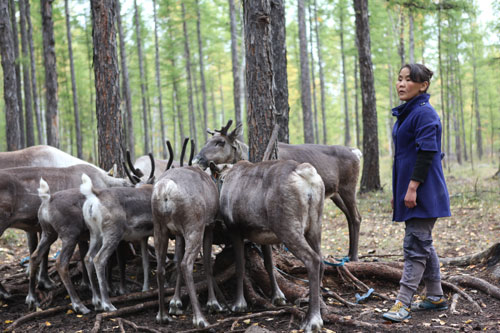
Beliefs
Prior to contact with the Russians, the belief system of the Evenks was animistic. They respected nature believing it to be a living being.
Evenks relied on shamans to protect them from harmful influences. The shaman looked mysterious with his long uncombed hair in his ceremonial coat with the long pointed tail trailing along the ground. His head covered with an embroidered hood and his face concealed with a painted mask, he beat his reindeer-skin covered charmed tambourine adding to the noise-makers on his coat. An impressive sight, indeed.
The shaman usually sat on a white fur rug in his tent surrounded with meaningful items well known to the Evenks. You approached through an avenue of live larch trees and carved wooden images and on the threshold you stepped over a doubled headed pike. Some ceremonies lasted for three days or more.
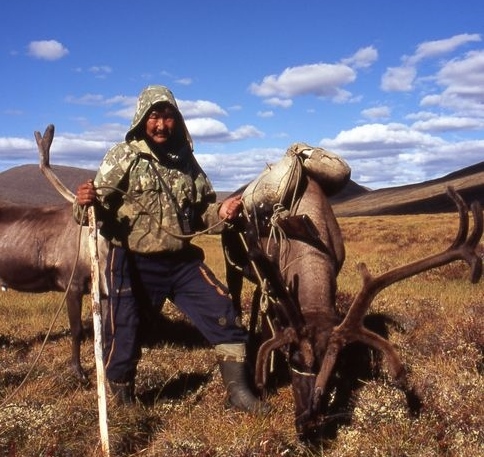
Setting Up Camp
After hacking your way through the forest with your pike, crossing countless streams and lakes humming with mosquitoes, you peer at the special marks on trees to show you which way to go. On arrival at the chosen site, an Evenk mother would ask Mother Earth for permission to put up her tent. Praying for good fortune, she would make a fire in the center of the tent and brew some tea. She would then turn to her baby hanging up in its wooden baby seat. The child is dressed in all-in-one suits made from soft rabbit fur. She unties a flap to change the disposable diaper made from moss. She then gives the baby some reindeer milk and mash.
Tent Living
The living space was tiny and was very neatly and carefully arranged. The space near the entrance belonged to the wife. The space at the back was for male guests such as hunters from other families. The sides were for the rest of the family and household. They all bedded down in sleeping bags, head toward outside and feet nearest the fire.
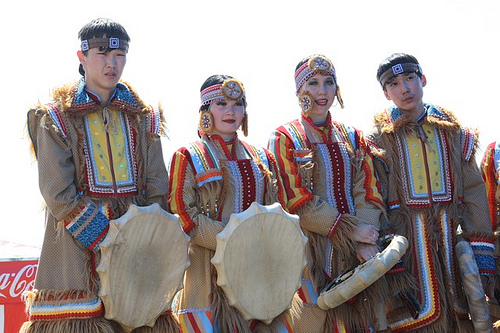
Sharing
Wooden store houses were built on stilts to keep stuff out of reach of mice. Anyone passing by could take something out of someone else’s store house, but they were expected to leave something in return. Exchange was the only currency then and the practice goes on.
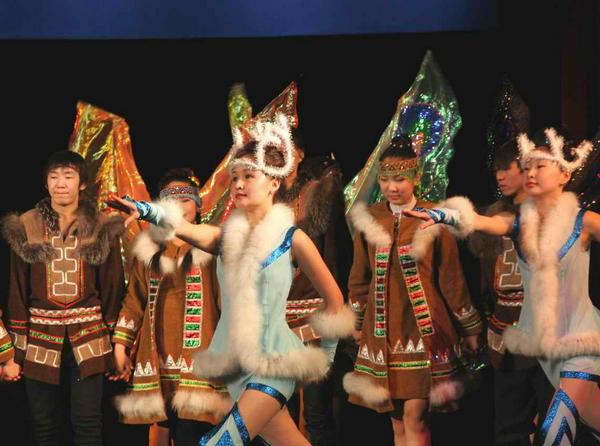
Modern times
The Evenk National Territory has almost escaped the negative influence of industrial industry although they are studying the oil and mineral resources in the region now. The Baikal-Amur railway through southern Siberia was started in the 30s and went on (on and off) until 1991. There never was any thought of environmental impact during this project though the later work was done with “clean hands” meaning no forced labor. After the project ended, boom towns became ghost towns and pollution and deforestation has damaged traditional hunting grounds for the Evenks.
The country still has wild areas of taiga with no railroads or real roads. Transport depends on aircraft, river boats in summer, and frozen winter roads.
Communication With The Outside World
In the 1980’s, many towns still did not have telephone connections. Communication satellites enabled reindeer herders to watch portable television in their tents. Internet access is possible now. But they do not have a reliable electricity supply. Radio has been the main means of communication.
The Evenks were well representated in the Congress of Northern Ethnic Minorities that was held in Moscow in 1990. An Evenk writer, M. Mongo, belonged to the organizing committee of the congress and delivered a critical speech on the fate and future of small nations.
